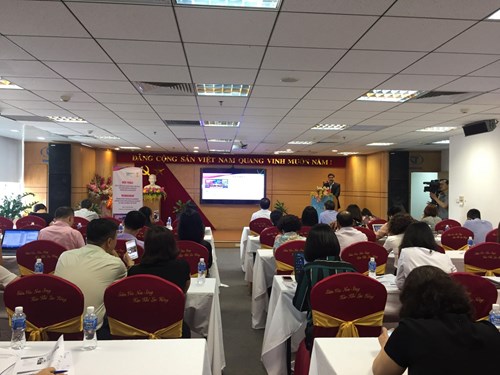Jointly held by the Vietnam Textile and Apparel Association (VITAS) and the IEC Group of Australia, the event focused on measures to help Vietnamese textiles and garment enterprises increase exports to Australia.
    |
 |
|
At the workshop. Photo: kinhtevadubao.vn |
According to Nguyen Phuc Nam, Deputy Director of the Department of Asia-Pacific Market under the Ministry of Industry and Trade, Australia is a potential market for Vietnamese textiles and garment exporters, while the market share of Vietnamese products in this market remains small.
Truong Van Cam, Vice Chairman and Secretary General of VITAS, said that the current growth of textiles and garment exports to Australia is just below 10 percent, but with the signing of the CPTPP, the rate is expected to reach a double-digit growth.
Reports delivered at the workshop showed that total textiles and garment import turnover of the CPTPP member countries exceeded 53 billion USD in 2017, of which Australia was the third biggest import market with total turnover reaching over 6.2 billion USD, accounting for 11.67 percent.
Vietnam earned over 4.8 billion USD from exporting textiles and garments to the other CPTPP member nations in 2017, making up 9.07 percent of the market share.
As committed in the CPTPP, Australia will reduce its import duties to 5 percent in the first three years after the agreement comes into effect, and to zero percent from the fourth year for almost products.
Moreover, Australia is gradually shifting to import and outsource textiles and garment products in Vietnam because of cheaper labour cost and lower tax rates than those in China.
Cam said Australia’s textiles and garment import turnover grows by 3-5 percent annually in the past 5 years. In 2017, the country imported about 9.32 billion USD of textiles and garment products from countries in the world. Vietnam’s textiles and garment exports to the nation reached only 173 million USD, equivalent to just 1.9 percent of its total textile import turnover.
Vietnam is facing a severe competition from China as the country’s textiles and garment market share in Australia amounts to 60 percent.
According to Tran Van Quyen, a representative of Woolmark Company of Australia in Vietnam, the purchasing power of Australian consumers is even higher than that in the US and Europe. However, orders from Australia are usually small because Australian firms are operating in the form of online business, so they usually order in small quantities, avoiding large inventory.
Vietnamese big enterprises are not interested in small orders, while small firms of Vietnam do not have a social responsibility certificate to qualify for exporting products to Australia.
In order to get better access to the market, Vietnamese businesses should enhance promotion and study more to understand its characteristics, said Nam of the Department of Asia-Pacific Market.
Source: VNA